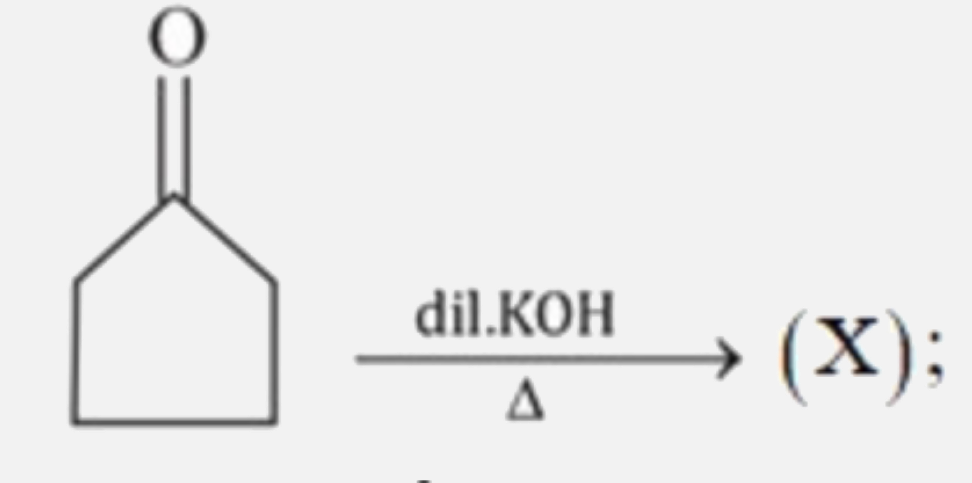How many assymmetric carbon atoms are present in
(i)1,2-Dimethyl cyclohexane , (ii)3-Methyl cyclopentene , (iii)3-Methylcyclohexene
2,1,1
1,1,1
2,0,2
2,0,1
The correct Answer is:A
To determine the number of asymmetric (chiral) carbon atoms in the given compounds, we will analyze each structure step by step.
Step 1: Analyze 1,2-Dimethylcyclohexane
1. Draw the structure: Start with a cyclohexane ring and add two methyl groups at the 1 and 2 positions.
2. Identify chiral centers:
- The carbon at position 1 has one hydrogen, one methyl group, and two other groups from the cyclohexane ring, making it chiral.
- The carbon at position 2 also has one hydrogen, one methyl group, and two other groups from the cyclohexane ring, making it chiral.
3. Count the chiral centers: There are 2 chiral centers in 1,2-Dimethylcyclohexane.
Step 2: Analyze 3-Methylcyclopentene
1. Draw the structure: Start with a cyclopentene ring and add a methyl group at the 3 position.
2. Identify chiral centers:
- The carbon at position 1 (part of the double bond) cannot be chiral.
- The carbon at position 2 (part of the double bond) cannot be chiral.
- The carbon at position 3 has one hydrogen, one methyl group, and two other groups from the cyclopentene ring, making it chiral.
- The other carbons in the ring do not have four different substituents.
3. Count the chiral centers: There is 1 chiral center in 3-Methylcyclopentene.
Step 3: Analyze 3-Methylcyclohexene
1. Draw the structure: Start with a cyclohexene ring and add a methyl group at the 3 position.
2. Identify chiral centers:
- The carbon at position 1 (part of the double bond) cannot be chiral.
- The carbon at position 2 (part of the double bond) cannot be chiral.
- The carbon at position 3 has one hydrogen, one methyl group, and two other groups from the cyclohexene ring, making it chiral.
- The other carbons in the ring do not have four different substituents.
3. Count the chiral centers: There is 1 chiral center in 3-Methylcyclohexene.
Final Count of Chiral Centers
- 1,2-Dimethylcyclohexane: 2 chiral centers
- 3-Methylcyclopentene: 1 chiral center
- 3-Methylcyclohexene: 1 chiral center
Summary
- Total chiral centers:
- 1,2-Dimethylcyclohexane: 2
- 3-Methylcyclopentene: 1
- 3-Methylcyclohexene: 1
Answer:
The total number of asymmetric carbon atoms is:
- 2 (1,2-Dimethylcyclohexane)
- 1 (3-Methylcyclopentene)
- 1 (3-Methylcyclohexene)
2. Identify chiral centers:
- The carbon at position 1 has one hydrogen, one methyl group, and two other groups from the cyclohexane ring, making it chiral.
- The carbon at position 2 also has one hydrogen, one methyl group, and two other groups from the cyclohexane ring, making it chiral.
3. Count the chiral centers: There are 2 chiral centers in 1,2-Dimethylcyclohexane.
2. Identify chiral centers:
- The carbon at position 1 (part of the double bond) cannot be chiral.
- The carbon at position 2 (part of the double bond) cannot be chiral.
- The carbon at position 3 has one hydrogen, one methyl group, and two other groups from the cyclopentene ring, making it chiral.
- The other carbons in the ring do not have four different substituents.
3. Count the chiral centers: There is 1 chiral center in 3-Methylcyclopentene.
2. Identify chiral centers:
- The carbon at position 1 (part of the double bond) cannot be chiral.
- The carbon at position 2 (part of the double bond) cannot be chiral.
- The carbon at position 3 has one hydrogen, one methyl group, and two other groups from the cyclohexene ring, making it chiral.
- The other carbons in the ring do not have four different substituents.
3. Count the chiral centers: There is 1 chiral center in 3-Methylcyclohexene.
- 3-Methylcyclopentene: 1 chiral center
- 3-Methylcyclohexene: 1 chiral center
- 1,2-Dimethylcyclohexane: 2
- 3-Methylcyclopentene: 1
- 3-Methylcyclohexene: 1
- 2 (1,2-Dimethylcyclohexane)
- 1 (3-Methylcyclopentene)
- 1 (3-Methylcyclohexene)
Topper's Solved these Questions
Similar Questions
How many carbon atoms are present in Acetyl CoA ?
View SolutionHow many carbon atoms are present in aspirin ?
View SolutionHow many carbon atoms are present in a pentose sugar?
View SolutionHow many 4°carbon atoms are present in 2,2,4,4-tetramethyl pentane?
View SolutionHow many geometrical isomers are possible for 1,2,4-Trimethyl cyclohexane.
View SolutionStructure of 1,3-dimethyl cyclohexane is?
View Solution
how many sp2 carbon atoms are present in the final product?
View SolutionHow many chiral carbon atoms are present in 2.3,4− trichloropentane?
View SolutionHow many carbon atoms are present in one unit cell of diamond ?
View SolutionHow many N atoms are present in 0.25 mol of N2 ?
View Solution